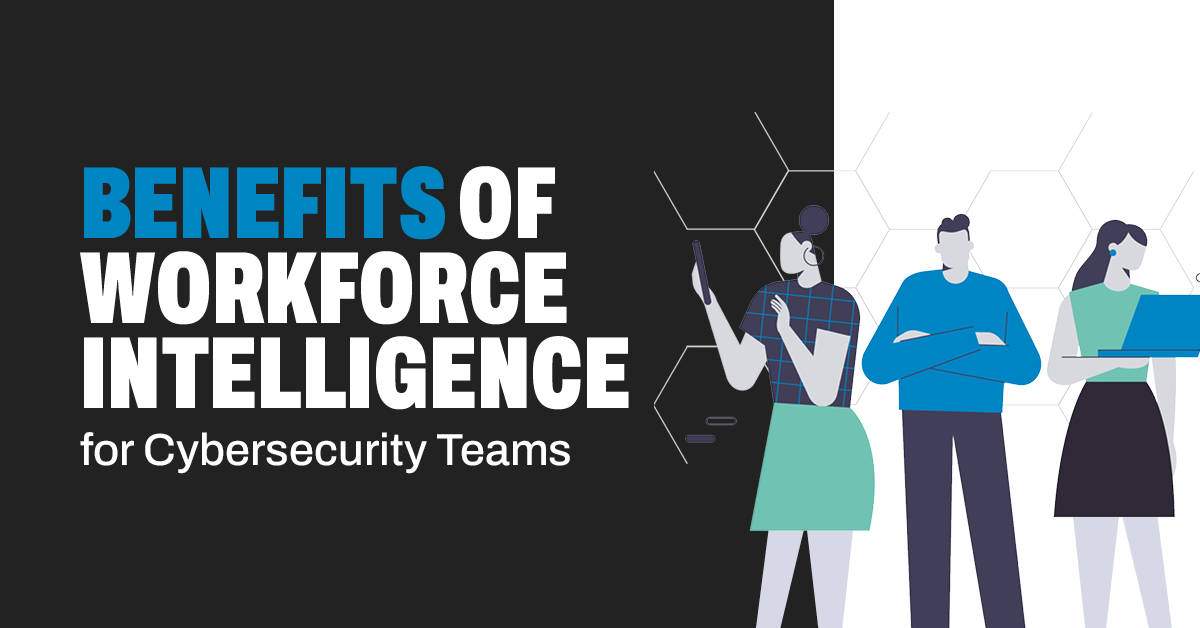You need a plan to build an effective cybersecurity workforce development strategy. But a plan with no data to back it up–on job role expectations, current workforce capabilities, and skills gaps–has the potential to fall flat. Strategic Workforce Intelligence can provide those key talent insights to help turn your plan into action.
Re: Workforce Intelligence - a data-driven approach to assess the health and maturity of your [cyber] team’s capabilities using insights from internal skills and market data to help make more strategic talent development decisions.
Benefits of Workforce Intelligence for Cybersecurity Teams
Implementing Workforce Intelligence may sound like it's only for the juggernauts with big budgets and personnel. However, the insights gained are equally beneficial for SMBs and enterprises committed to building a cybersecurity talent development strategy that has a lasting positive impact on their people and the organization as a whole. Key benefits include:
1. A strategy that benefits the collective, not just star performers.
Today's cyber workforce development programs only focus on the individual: sourcing star performers with years of experience and credentials, paying a premium for training that creates disproportionate workforce capabilities, only for them to leave a year or two later. A holistic organizational strategy based on real-time talent insights ensures decisions are made strategically on developing skilled talent in the aggregate and spotting opportunities to invest in otherwise overlooked but high-potential candidates.
2. Cyber job architecture standardization.
Many job descriptions for cybersecurity roles include a smorgasbord of skills or even specific technology without any indication as to the degree of proficiency or prioritization. In most cases, the qualifications given are lifted from job descriptions of other companies and may not accurately reflect what’s necessary for the position or your company. Use Workforce Intelligence to clarify competency and proficiency expectations of current roles to differentiate by hierarchy, such as a Tier I SOC analyst versus a Tier II, or categorize job families by functional groups, such as security operations versus vulnerability management.
3. Improve talent acquisition.
Building off of standardizing your cyber job architecture, Workforce Intelligence can optimize the time and resources needed for talent sourcing and acquisition efforts. Regularly evaluating your cyber roles and skill expectations ensures job descriptions stay current and relevant so you can attract the right candidates, practitioners are clear on expectations when applying and onboarding, and help HR and recruitment teams know what to look for when screening talent and establishing accurate hierarchies for pay bands.
4. Identify and address skills gaps proactively.
Is your company planning to acquire another business and adding to your headcount? Is your department implementing a brand new technology? Have a constant health check into your workforce capabilities to maintain an accurate running inventory of roles and skills and anticipate potential needs ahead of business and industry changes. You can also identify team skill and proficiency trends by function, location, or industry benchmarks to implement appropriate remedial tactics to minimize potential risks or setbacks.
5. Increase talent mobility and retention.
One of the main reasons employees leave a job is a lack of career development opportunities. Demonstrate your commitment to your employees’ growth with a defined talent mobility blueprint to advance seamlessly within your cyber org chart. Using insights gathered from Workforce Intelligence, you can formulate training plans for employees to refine skills for a current role or cross-skill to move vertically or laterally.
6. Allocate resources effectively.
With the right talent insights, it helps you measure twice to cut once on making the most optimal investment decisions that make sense for your workforce and your budget. Determine whether to build or buy talent, continue with, supplement, or replace current training solutions, how much time to allocate to training and for whom, and more. Present this data to the board and other stakeholders to build a business case for investment decisions, demonstrate savings on soft and hard costs, and how it benefits other key initiatives.
7. Build business resilience and agility.
You can buy down risk by implementing tailored training based on Workforce Intelligence insights to ensure your teams can identify vulnerabilities and threats and act quickly and decisively to minimize harm. Data on workforce performance provides context on the impact of your people strategy toward greater cybersecurity and organizational objectives. Moreover, Workforce Intelligence helps increase agility and competitive advantage with insights to upskill and build proactively against other organizations.
Let Us Help You Get Started
Suppose workforce development is a priority for your organization, but bandwidth is limited. In that case, N2K’s Strategic Cyber Workforce Intelligence solutions can help take the lift off your shoulders so you can focus on what you need to.
Additional Resources
